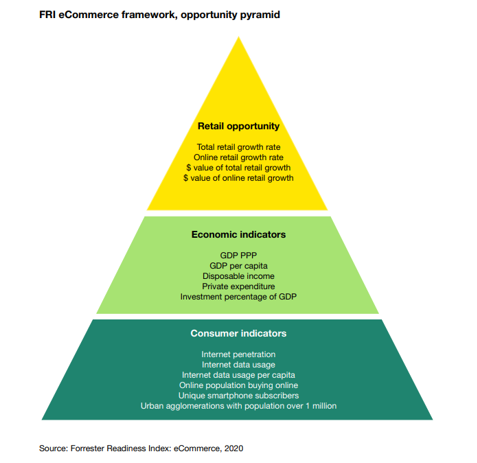
Sustainability continues to be a critical subject line for a number of industries — none more so than the apparel and footwear sector. As business models for brand owners and fashion retailers evolved, giving customers immediate access to the latest trends, critics have weighed in on the impact the fashion industry has made to the global environment.
With growing pressures from environmental organizations and shifting customer values, whereby shoppers choose to engage with brands they deem more environmentally conscious, more retailers are taking proactive steps toward sustainability.
These days, consumers don’t just want high-quality products, value for money or efficient home delivery. Instead, they want socially conscious brands and retailers with similar ethos to their own. In fact, research released by Euclid, revealed that customers prefer brands that share aligned values more than the brand’s actual products. Amongst the data, it found 52% of millennials and 48% of Generation X feel it’s important that their values align with the brands they like. This is compared to just 35% of baby boomers who felt the same way.
A global industry working towards one single goal
In the UK alone, more than 25 large retailers including John Lewis, Next and House of Fraser pledged to take part in the British Retail Consortium’s new sustainability initiative — Better Retail Better World Initiative. The scheme includes a number of targets the retail sector must meet as a whole by 2020 such as; reducing waste, greenhouse gas emissions and deforestation and publicly disclosing how they are supporting individuals from underrepresented demographics to progress in employment.
In addition to large-scale initiatives enabling retailers to adopt sustainable practices, many brands are implementing their own processes in order to make their entire supply chain more environmentally friendly. As a result, many retailers are utilizing sustainable materials for garments, recycling materials as well as using more carbon-neutral transportation methods.
For example, Walmart recently announced its plans to reduce plastic waste in addition to promoting consumer-friendly recycling labels. As well, H&M’s Conscious Collection marks the fashion giant’s move into sustainable fashion. Each item in the collection has an aspect that reduces its impact on the environment by using sustainable materials such as organic cotton or recycled polyester. The fashion brand also provides clothing recycling facilities where they ensure the materials don’t end up in a landfill.
For the past 6 years, the H&M group has collected 78,000 tons of clothing from customers as a result of its donation points in stores around the world. Footwear brands such as Nike and Adidas have also made steps to reduce their carbon footprint, both through manufacturing processes and material innovations.
The hidden secret of sustainability
Whilst retailers have an optimum opportunity in reducing their impact on the environment through the materials in their new products, a sustainability secret also lies within the cost of their existing stock. Most retailers these days operate with an inventory accuracy of less than 70% which, as a result, often leads to bloated stock with remains unsold and ultimately ends excess waste and transportation.
A luxury fashion brand was recently under fire when it was revealed it had destroyed $40M worth of stock instead of selling items at a reduced price. In addition, it’s reported that over 12 million tons of clothes are sent to landfills with unsold clothes undoubtedly making up a significant percentage.
RFID and the sustainable supply chain
As millions of tons of clothes are sent to landfill each year, it’s essential that retailers and brands explore ways in which they can reduce the number of items being produced. With retailers currently operating at 70% inventory accuracy on average, it’s highly likely that many remain in the dark about what items are selling compared to those that are left on the stockroom floor. By utilizing technologies such as item-level RFID retailers can reduce their environmental impact by ensuring a higher accuracy of their inventory and therefore decreasing both their bloated stock.
Due to the technology being able to deliver a stock accuracy of 98%, retailers are able to make much more informed decisions around their stock levels. If certain items aren’t selling, they can reduce the amount produced at the manufacturing stage; minimizing production materials and transport emissions. By implementing this process, brands and retailers are ensuring that all stock produced will be sold and reducing the amount sent to landfill. Numerous retailers to date have reduced their inventory levels by more than 10% while increasing sales simultaneously.
Another secret that will soon start coming into the light, as more retailers adopt item-level RFID and improve inventory accuracy, is the savings that trickles down into reduced transportation and the reduced emissions that are a result. Retailers can decrease the shipment of thousands of shipping containers of goods thanks to a new era of inventory management through item-level RFID, making a tangible impact on transportation generated emissions.
In order to deliver on the promise of sustainable retail, brands need to consider more than ensuring the materials they use have less impact on the environment. Instead, they need to take a closer look at their entire supply chain and the ways in which they can make small changes that can make a significant distance. For example, minimizing plastics used in clothing tags and hangers and using paper-based alternatives.
As the conversation around sustainability and fashion continues to weigh on, and the importance of this becomes increasingly apparent, retailers need to ensure they are paying attention to what their eco-conscious customers want. Not only will this lead to an exemplary example of social responsibility but enable retailers to attract shoppers whilst simultaneously caring for the world we live in.

